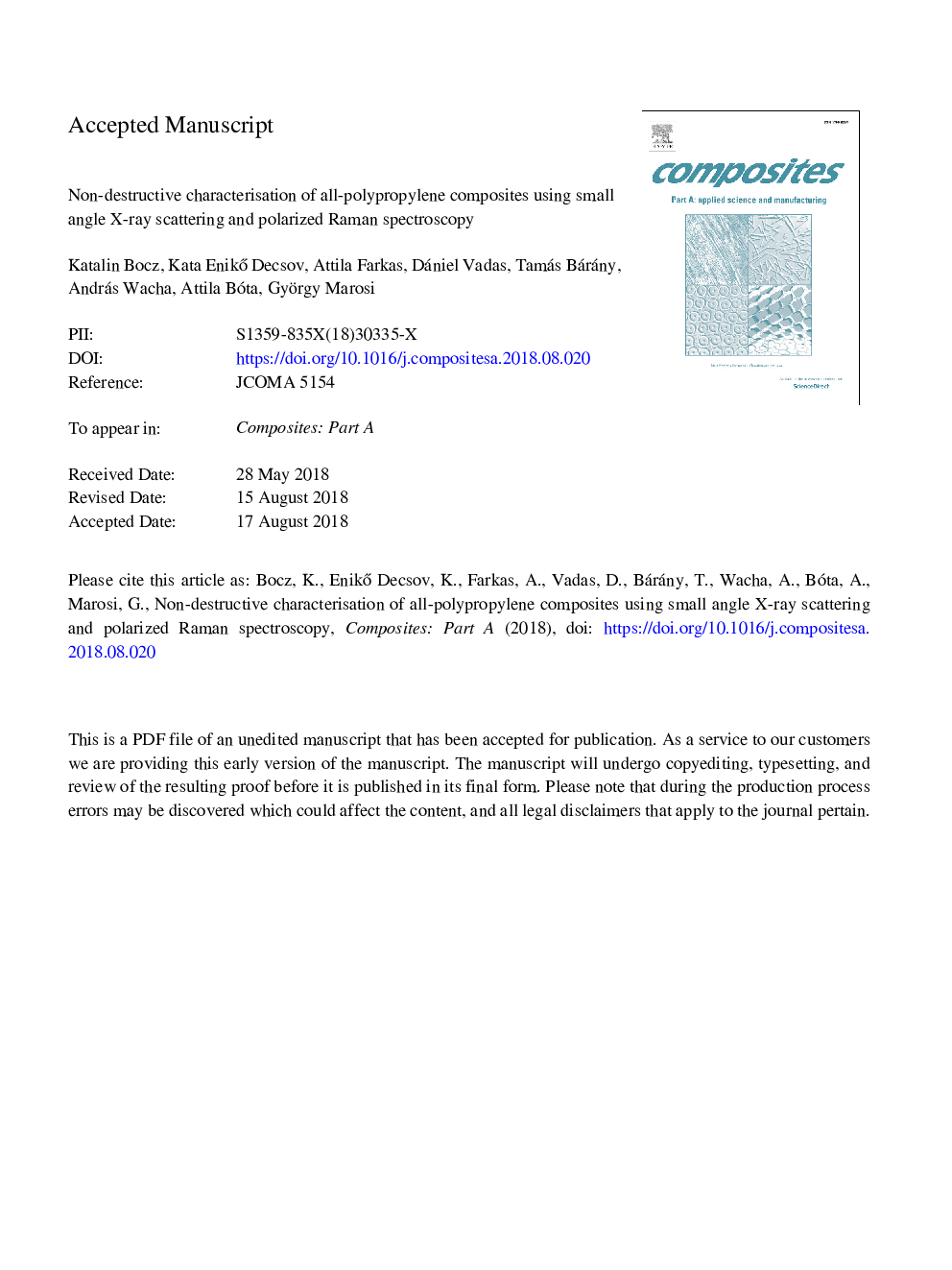| Article ID | Journal | Published Year | Pages | File Type |
|---|---|---|---|---|
| 10128347 | Composites Part A: Applied Science and Manufacturing | 2018 | 38 Pages |
Abstract
Small angle X-ray scattering (SAXS) and polarized Raman spectroscopy were used to examine the structure of unidirectional all-polypropylene composites prepared at different consolidation temperatures. Analysis of the anisotropy of the X-ray scattering pattern provided a way to quantify the disorientation of the crystallites and a direct correlation has been found between a measure of overall orientation and the Young's modulus of the composites. In the case of the Raman spectroscopic measurements, the molecular orientation state of the reinforcing PP fibres were evaluated by classical least squares (CLS) modelling with real reference spectra. Strong correlation was evinced between the estimated relative degree of orientation of the reinforcing fibres and the Young's modulus of the multi-layered all-polypropylene composites. Based on these results, both SAXS and Raman spectroscopy are suitable methods to predict the mechanical performance of all-polymer composites, being especially sensitive to manufacturing and application conditions, in a non-destructive way.
Related Topics
Physical Sciences and Engineering
Materials Science
Ceramics and Composites
Authors
Katalin Bocz, Kata EnikÅ Decsov, Attila Farkas, Dániel Vadas, Tamás Bárány, András Wacha, Attila Bóta, György Marosi,
